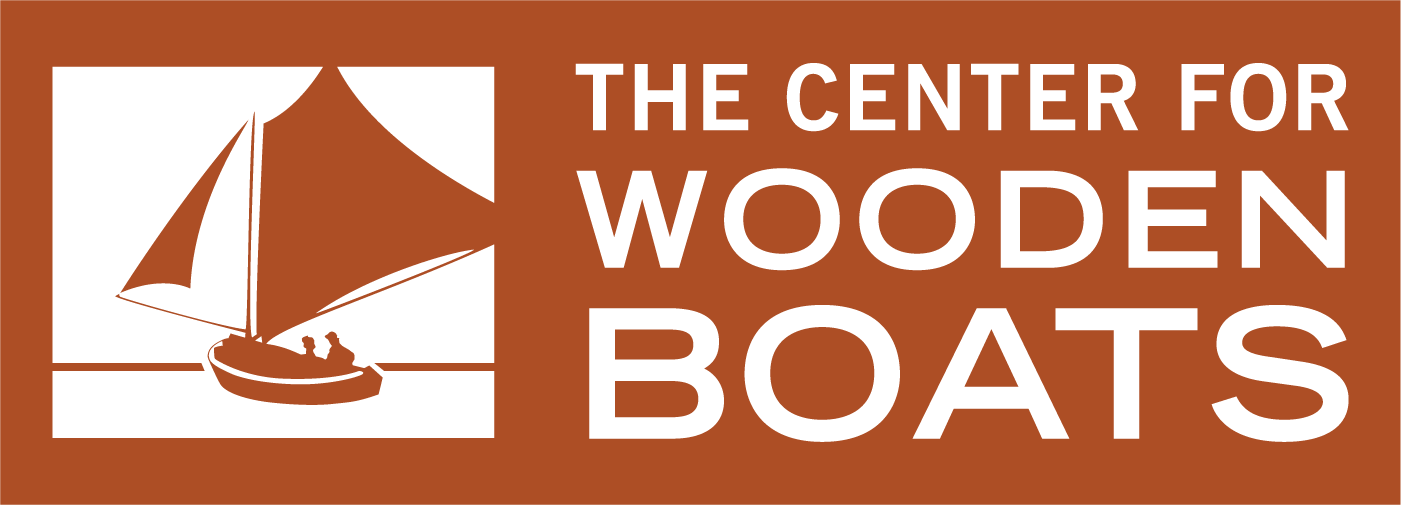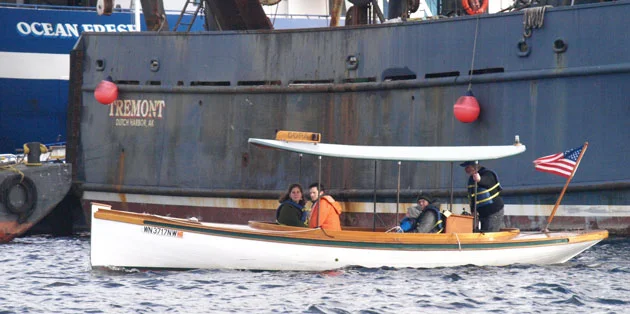Fantail Launch – "Dora"
In the late 1880s, refinements in the steam engine, as well as new technologies such as naptha, gasoline, and electric motors resulted in the creation of a new type of watercraft: the small power boat. Early pleasure launches were designed very much like the larger steam yachts being produced at the time, often long and narrow with overhanging ends. In the small launch, a single open cockpit with a canopy top took the place of cabins and staterooms. It was boats like these that Oregon Naval Architect Pat Spurlock had in mind when he designed our electric launch Dora. Specifically, Dora is a “fan tail” launch, a term which refers to her semi-circular counter stern, a design element which was also popular for steam yachts.
Pat was inspired especially by the boats of the Electric Launch Company of Bayonne, NJ, which was founded in 1893 to produce electric launches powered by early dry-cell batteries. Early power launch- es, being narrow, round bilged boats double-ended on the waterline, were very efficient at low speeds and therefore well-suited to electric power. As gas engines became more reliable and consumers de- veloped a taste for higher power, electric boats faded. The company shortened its name to Elco and switched to producing gas-powered launches and cruisers, remaining successful until the late 1940s. In the 1970s there was a resurgence of interest in electric-powered boats and the Elco name was resur- rected by new owners to produce electric launches and drive systems. Dora is powered by an electric motor and control system produced by this company.
Dora was a collaborative community project, built by the students in the Maritime Carpentry Pro- gram at Seattle Central Community College. Wood and other materials were donated by CWB sup- porters Bob and Erica Pickett, Bob Duggan, and his nephew Mike Foley. The boat is named after Dora Duggan, Bob’s mother, and it is said that the elegant little vessel is well suited to the name.







